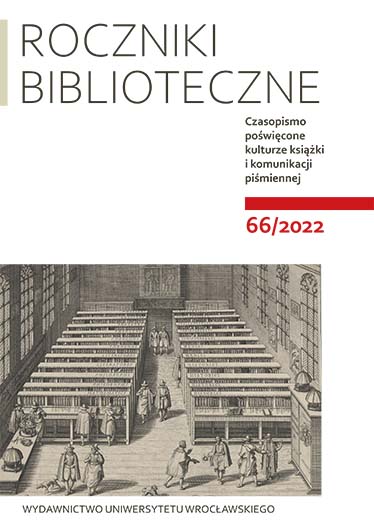Czerwone katechizmy. Socjalistyczne broszury agitacyjne w Królestwie Polskim na przełomie XIX i XX wieku
Red catechisms: Socialist agitation brochures in the Kingdom of Poland at the turn of the 20th century
Author(s): Kamil PiskałaSubject(s): Theology and Religion, Sociology of Religion
Published by: Wydawnictwo Uniwersytetu Wrocławskiego
Keywords: socialism; Marxism; political agitation; ideology; working class
Summary/Abstract: In the Polish territories, the turn of the 20th century was the time of massifying the political movements referring to modern ideologies. Due to the political conditions prevailing in the Kingdom of Poland, these ideologies reached the mass audience primarily by means of print. This article analyses a specific sub-genre of contemporary political writing — socialist agitation brochures. These texts were supposed to constitute a comprehensive and complete presentation of the principles of socialist ideology. These dozen or so page-long booklets provided readers with a comprehensive explanation of the most important mechanisms that organised the life of the capitalist society and the relations between individual social classes. They had a significant conversion potential. Therefore, their printing and distribution were treated as crucial for gaining new supporters of the contemporary socialist movement. An overview of the most popular brochures of this type is presented in the first part of this article. Then, the most common themes found in these brochures are discussed: the analysis of class divisions (usually expressed in terms of moral economy), the presentation of the theory of surplus value, and the fundamental elements of Marxist political economy. The second part of this article thoroughly discusses the ways of making the brochures accessible to plebeian readers, who usually had only modest reading experience. They included: fictionalisation, dialogical structure of texts, frequent recapitulations, using the form of “collective we”, vivid and suggestive language, translating abstract political categories into examples from everyday life etc. At the end of the article, an attempt is made to reconstruct a specific scenario of managing readers’ emotions, used in numerous of the analysed brochures. The affective dimension of this type of texts remains underrated. It seems, however, that without understanding it, it is difficult to explain the persuasive potential of popular socialist brochures.
Journal: Roczniki Biblioteczne. Czasopismo poświęcone kulturze książki i komunikacji piśmiennej
- Issue Year: 66/2022
- Issue No: 1
- Page Range: 153-174
- Page Count: 22
- Language: Polish

